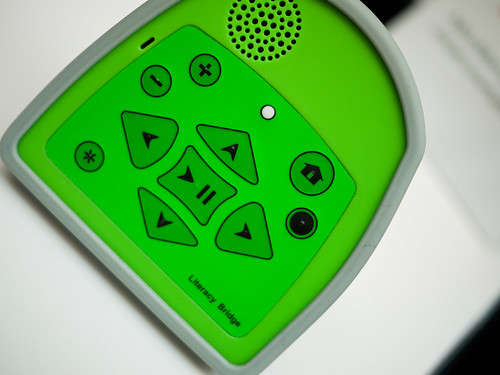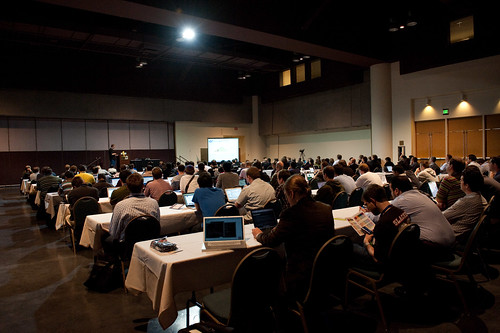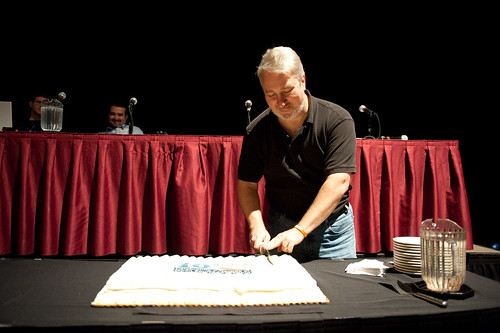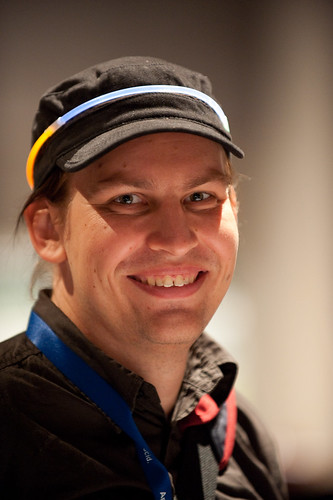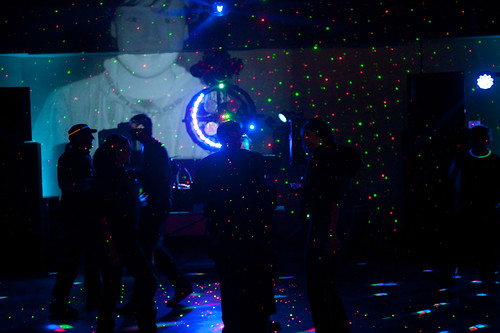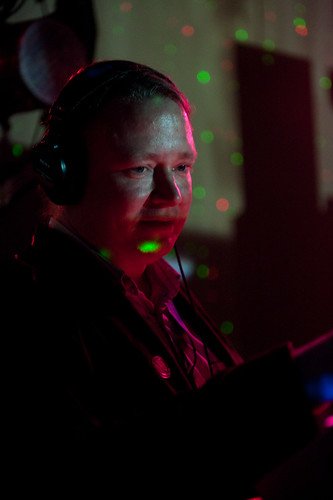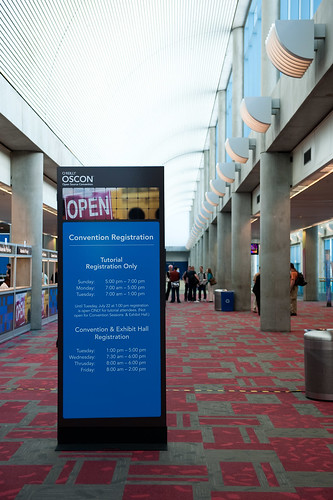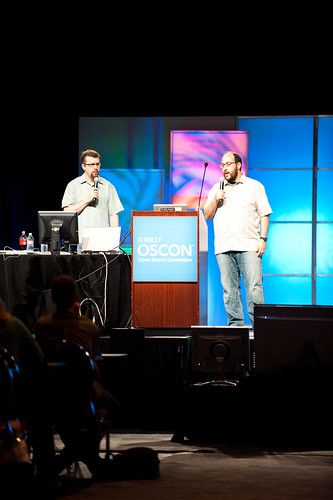I’m sitting on an Amtrak train at the end of July, which can only mean that OSCON has just finished up.
This year OSCON had something new, a pair of extra conferences, one on Data and one on Java, that overlapped the usual OSCON tutorial days. This year, I’m going to break the talk coverage down by conference.
OSCON Data
For purely technical content, OSCON Data was the winner for me. There were two talks which stuck out.
The first was Tom Wilkie’s talk on Castle. I first became aware of Castle at South by Southwest, when a persistent Manu Marchal found me on Twitter and arranged a meeting to explain the technology that Acunu was building to accelerate Cassandra and similar types of storage engines. Earlier this year the Acunu team published some papers describing their work. Those papers are still on the desk in my office, so I figured I could get the overview of the paper content by attending the talk. It’s a pleasure to see a talk focused on fundamental technology work on data structures and algorithms, and Tom’s talk delivered that. Castle is the open source version of their write optimized in kernel storage system. I’m looking foward to hearing field reports.
The other stand out talk was Josh Patterson’s talk Lumberyard: Time series indexing at scale, Time series data is growing in importance, and it’s great to see people working on this problem. Lumberyard uses the iSAX work that was done at UC Riverside. In addition to the time series functionality, Josh demonstrated how a number of seeming unrelated problems like image recognition, could be converted into time series problems which could then be solved with something like Lumberyard. I definitely learned something new.
OSCON Java
I only attended one talk at OSCON Java, and then only briefly. The talks was a keynote on JavaFX. JavaFX was originally positioned as a competitor to Flash/Flex, and then expanded to act as a new GUI framework for desktop Java. In the meantime, the world has moved. The iPad is casting doubts on the value proposition of Flash, which is an established and broadly adopted technology. Microsoft is backing away from Silverlight, and focusing on HTML5. Even if Oracle wins its lawsuit with Google it’s hard to see how JavaFX would be relevant for the device world. It’s hard to see how there is any room for JavaFX.
OSCON
Ariel Waldman was given a keynote slot to talk about Hacking Space Exploration. Space exploration is a topic that resonates with many people that come to OSCON, and given the recent end of the U.S. Space Shuttle program, it was encouraging to hear about all the avenues which are available to those who are interested in space exploration. My middle daughter wants to go to Mars someday, and I’m definitely going to be showing her the video of this talk.
I ended up in Gabe Zicherman’s talk on Gamification by accident. Late last year we sent someone from our group to a gamification workshop and Zicherman was among the speakers. I figured that via summarized analysis I had heard all that I needed to know. Apparently not. The material that was presented was thought provoking, and Zicherman is an effective and entertaining speaker.
Personal information is in my blood, from my time working on Chandler and well before that. When I was at Strata last year, I briefly heard about the Locker project, but I didn’t really get a good sense of what was going on there. Jeremie Miller partially talked about and partially demo’ed the Locker project, and there was also a hackathon during one of the BOF slots. It is very early days still, but if you are interested in getting involved, bootstrapping instructions are here.
Sometimes you find emerging technology in the strangest places. I went to Awakening The Maker Ethic in K-12 Students because it was the only talk in that slot that seemed interesting, because I have kids, and because we’ve pursued an unusual path for their education. In addition to amassing a long reading list on education and technology and education, I learned something interesting about open hardware, Arduino in particular. Arduino has been around for a while, but I’ve really only heard it mentioned in the context of communities that would be the logical extensions of the model rocketeers, the hams, and the heathkit crowd. During this talk I learned that Arduino has crossed over into communities that are focused more on craft and art. Arduino makes it possible for these people to make smart craft items. Some examples of such items are this “reverse geocache” wedding gift box, and a bicycling jacket with turn signal lights embedded in it.
Hallway
I try not to comment on the hallway track, but there’s one conversation that i had which I think merits an mention. Earlier in the year, some mutual friends introduced me to David Eaves, who has been consulting with Mozilla to develop some metrics to help Mozilla improve the way that it manages its community. In April, David previewed some of his work in a blog post. At the ASF various individuals have done small experiments around community metrics, but as far as I can tell David’s work is defining the state of the art in this area. I would love to see the work that he has been doing duplicated in JIRA and Github. This is the kind of work that should be a talk at OSCON, and it’s a shame that we’ll have to wait until next year to hear that talk. In the meantime, read the post, get on the mailing list, and help bring open source community tools into the 21st century.
Meta
I’ve been coming to OSCON since 2003 (I did miss one year), and I always look forward to it. This year OSCON was tough for me. I had a very difficult time finding sessions to go to, especially in OSCON proper. Of the four sessions I found blog worthy, two were about open source, and I only ended up in two of them by accident – I almost went to nothing during those sessions. Ordinarily, that wouldn’t be a problem, because there’s always the hallway track. This year a lot of people that I normally expect to see at OSCON were not there. I did have a good hallway track, but not nearly as rich as normal. As an example, some of us went to celebrate Duncan Davidson’s birthday on Thursday night. In the past, there have been enough people to take over the Vault in Portland. This year, we only needed a single table. For me, that’s a serious impact because of the way that I approach the technology field. When I was a graduate student, my advisor lamented about a bygone era of DARPA funding in which you would go to DARPA and say, “I’m going to do X”. Sometimes you came back with X, but sometimes you came back with Y, but as along as Y was interesting there wouldn’t be a problem. During my era, DARPA apparently got much more serious about you doing what you said you would do. In that bygone era, DARPA funded people. In my era, they funded topics. Topics are important to me, but given the choice between topics and people, I will pick the people every time. I always tell people that the value of OSCON is that it’s the one place where you can get any substantial number of the open source communities together under one roof. I hope that keeps happening.
